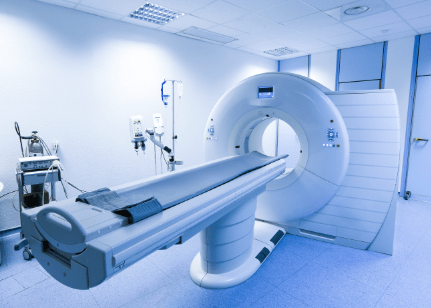Screening
Periodic Screening
At risk individuals should be screened for lung cancer based on their risk factors such as age, family history, occupational exposure, cancer history, disease history and lifestyle including use of tobacco. The current criteria for low dose CT screening adopted by the U.S. Preventive Services Task Force is adults 50 to 80 who have a 20 pack-year smoking history and currently smoke or who have quit in the past 15 years. This criterion represents the group of people where lung cancer is most likely to be found. To be clear, many people outside that group are diagnosed with cancer every year. No one is safe from lung cancer! You should talk with your care team to determine what right for you.
X-Ray Imaging
The historic method of screening for lung cancer is the chest x-ray. The National Comprehensive Cancer Network does not recommend X-Ray as a method of screening for lung cancer as they have proven to be ineffective.
Low Dose CT Scan
 The low-dose CT scan used for lung cancer screening is a newer form of CT scan know as low-dose spiral or helical CT scan. The low-dose spiral CT scan continuously rotates in a spiral motion and takes several 3-dimensional X-rays of the lungs. These X-rays are very detailed and can show early-stage lung cancers that may be too small to be detected by a traditional X-ray. Traditional X-rays can identify lung cancers the size of a dime, whereas low-dose spiral CT scans can reveal lung abnormalities the size of a grain of rice. This is a crucial difference– the smaller the tumor is when it is detected; the less likely the cancer cells have spread to other parts of the body. This means more treatment options and a higher chance of survival.
The low-dose CT scan used for lung cancer screening is a newer form of CT scan know as low-dose spiral or helical CT scan. The low-dose spiral CT scan continuously rotates in a spiral motion and takes several 3-dimensional X-rays of the lungs. These X-rays are very detailed and can show early-stage lung cancers that may be too small to be detected by a traditional X-ray. Traditional X-rays can identify lung cancers the size of a dime, whereas low-dose spiral CT scans can reveal lung abnormalities the size of a grain of rice. This is a crucial difference– the smaller the tumor is when it is detected; the less likely the cancer cells have spread to other parts of the body. This means more treatment options and a higher chance of survival.
A low-dose CT scan is a quick, painless, and non-invasive approach to screen for lung cancer. This type of CT scan uses no dyes, no injections, and requires nothing to swallow by mouth. The actual scan itself takes less than a minute to complete and from start-to-finish, the entire appointment takes approximately 30-minutes.